
Chapter 14
The Statement of Cash Flows
Chapter 14: Overview
The chapter begins with a discussion of the basic concepts and purposes of the statement of cash flows.
Operating, investing, and financing activities are defined. A brief comparison of the direct and indirect
methods for determining cash flows from operating activities is given. The five-step process for
preparing a statement of cash flows using the indirect method is outlined. Adjustments to net income,
including depreciation, gains/losses on the sale of assets, and changes in current assets and current
liabilities, are explained. Cash flows from investing and financing activities are illustrated using T-
accounts and formulas to aid in the explanations. Noncash investing and financing activities are

Chapter 14: Learning Objectives

Chapter 14: Teaching Outline
LO 1. Identify the purposes of the statement of cash flows and distinguish among operating, investing,
and financing cash flows
a) Statement of cash flow reports cash receipts and cash payments and helps:
i) Predict future cash flows
ii) Evaluate management
iii) Predict ability to pay debts and dividends
b) Classification of cash flows
i) Operating activities
ii) Investing activities
iii) Financing activities

▪ Exhibit 14-4: Income Statement
▪ Exhibit 14-5: Statement of Cash Flows—Indirect Method
▪ Exhibit 14-6: Adjustments Made to Reconcile Net Income to Net Cash
Provided by Operating Activities
b) Cash flows from investing activities
c) Cash flows from financing activities
d) Net change in cash and cash balances
e) Non-cash investing and financing activities
▪ Exhibit 14-7: Non-cash Investing and Financing Activities
Lecture Notes: The direct and indirect methods use different computations for cash flows from
operating activities but arrive at the same amount. For the indirect method, emphasize that
changes are made to net income to calculate cash flows from operating activities because we are
converting from accrual basis to cash basis. For example, depreciation and losses are non-cash
items but reduce net income. Therefore, they should be added back in arriving at cash flow as no
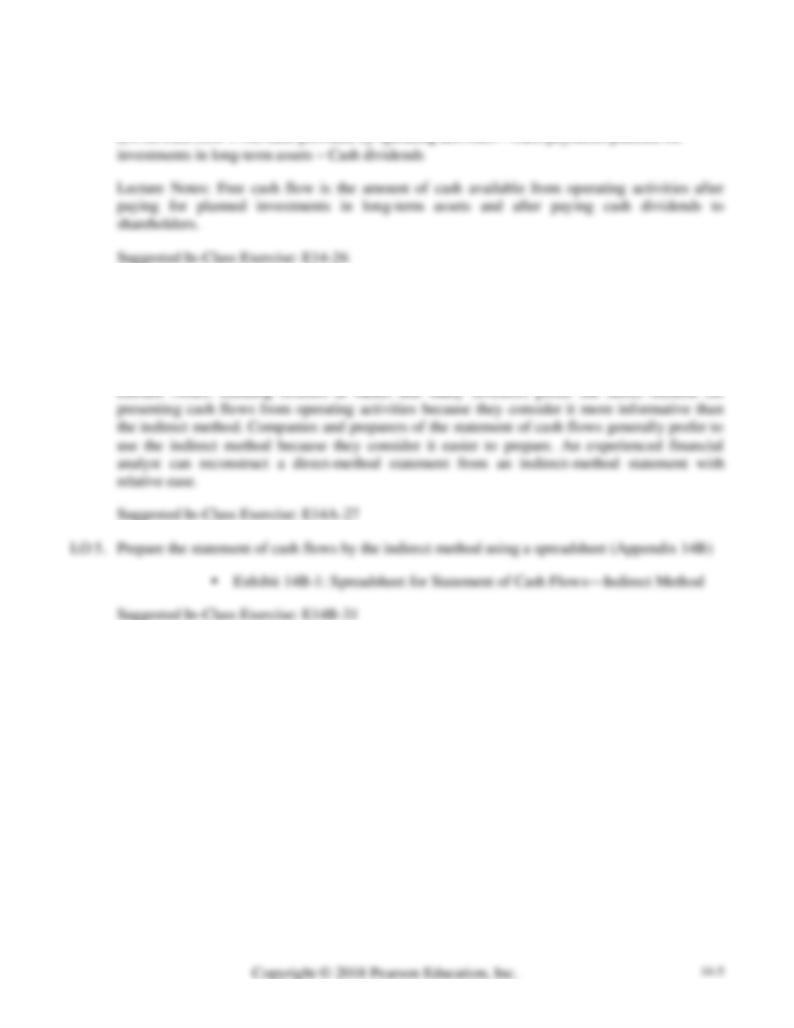
LO 3. Use free cash flow to evaluate business performance
LO 4. Prepare the statement of cash flows by the direct method (Appendix 14A)
a) Cash flows from operating activities
▪ Exhibit 14A-1: Statement of Cash Flows—Direct Method

Chapter 14: Handout for Student Notes
LO 1. What is the statement of cash flows?
LO 2. How is the statement of cash flows prepared using the indirect method?

▪ Evaluating cash flows from operating activities
o Cash flows from investing activities
LO 3. How do we use free cash flow to evaluate business performance?
LO 4. How is the statement of cash flows prepared using the direct method? (Appendix 14A)

▪ Cash receipts of dividend revenue
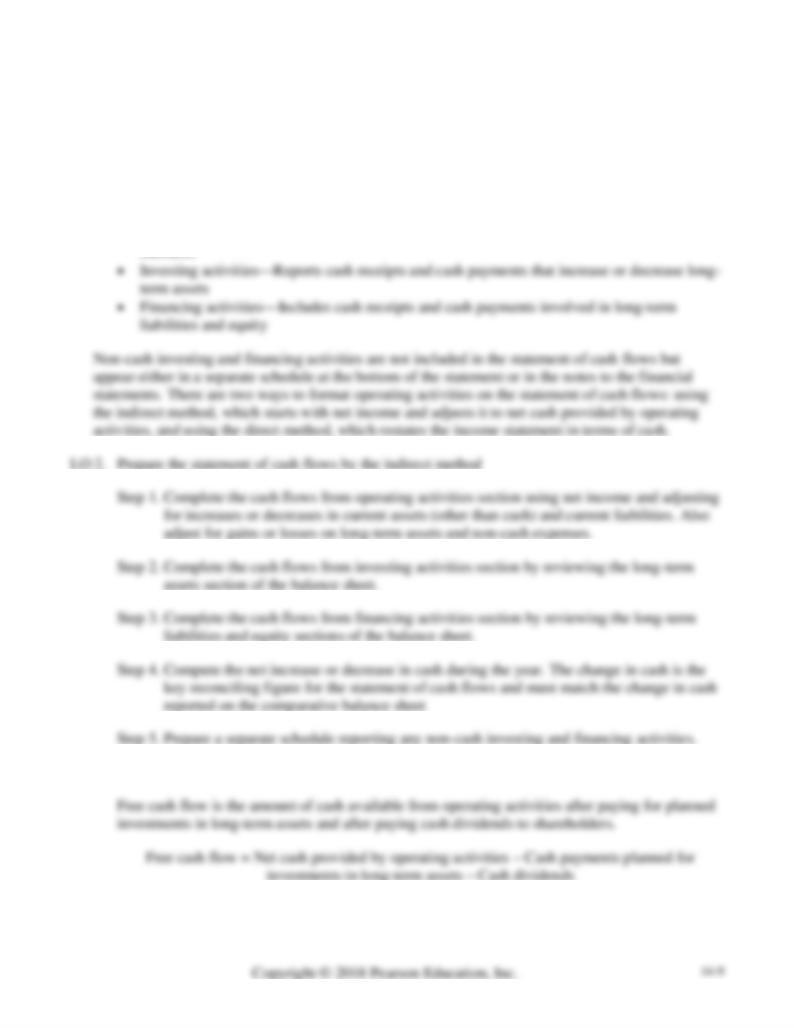
Chapter 14: Student Chapter Summary
LO 1. Identify the purposes of the statement of cash flows and distinguish among operating, investing,
and financing cash flows
The statement of cash flows reports on a business’s cash receipts and cash payments for a specific
period. There are three basic types of cash flow activities:
• Operating activities—Reports on activities that create revenue or expense in the entity’s
business.
LO 3. Use free cash flow to evaluate business performance

LO 4. Prepare the statement of cash flows by the direct method (Appendix 14A)

Chapter 14: Assignment Grid and Other Materials
S14-10
X
E14-26
X
P14-35A, P14-42B
X
X

Other End-of-Chapter Materials:

CHAPTER 14
4. The purchase of equipment by issuing a long-term note payable for the entire amount is reported on
5. Cooper’s Hardware earned net income of $67,000 after deducting depreciation of $5,000 and all

7. The Plant Assets account of Stanley Coffee shows the following:
Plant Assets, Net
Beg. Bal.
90,000
34,000
Depreciation
Acquisition
450,000
58,000
Disposal
8. Peaceful Resorts expects net cash provided by operating activities of $220,000, and the company
9. Purses Direct had Accounts Receivable of $25,000 at the beginning of the year and $44,000 at year-
10. Handmade Soaps Company had other operating expenses of $52,000. At the beginning of the year,

Answer Key to Ten-Minute Quiz:
5. A
Cash Flows from Operating Activities:
Net Income
$ 67,000

Extra Critical Thinking Questions
Decision Case 14-2
The 20X8 comparative income statement and the 20X8 comparative balance sheet of Golf America,
Inc., have just been distributed at a meeting of the company’s board of directors. The members of the
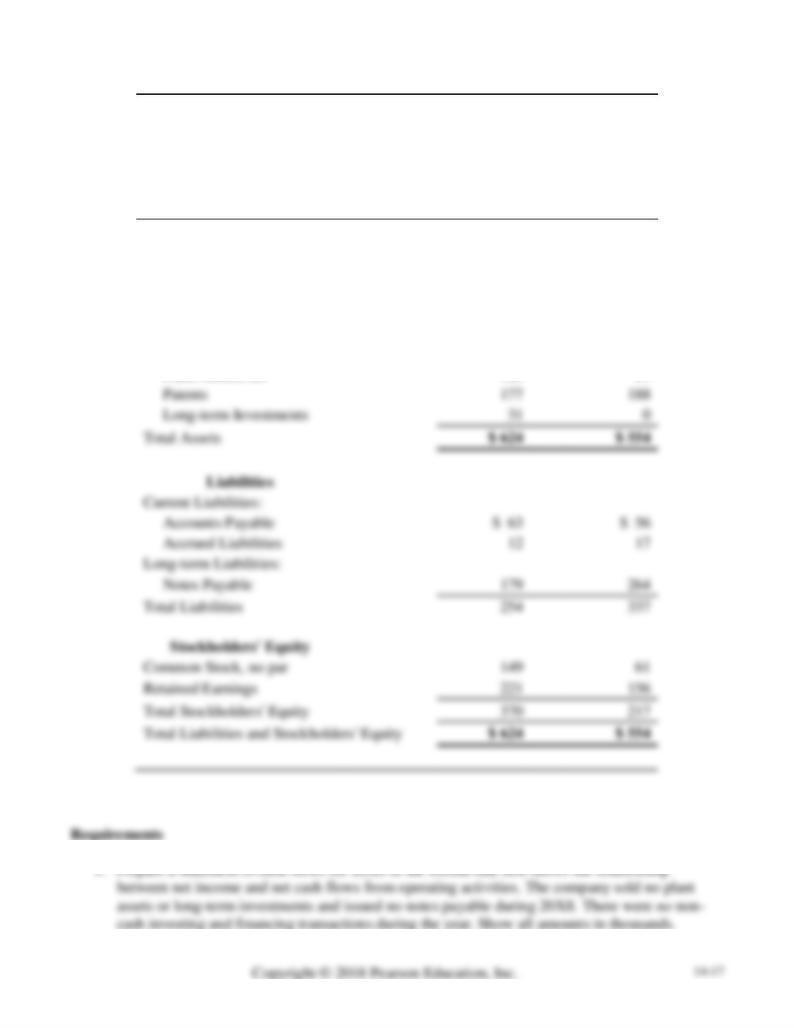
GOLF AMERICA, INC.
Comparative Balance Sheet
December 31, 20X8 and 20X7
(in thousands)
20X8
20X7
Assets
Current Assets:
Cash
$ 25
$ 63
Accounts Receivable
72
61
Merchandise Inventory
194
181
Long-term Assets:
Plant Assets, net
125
61
1. Prepare a statement of cash flows for 20X8 in the format that best shows the relationship
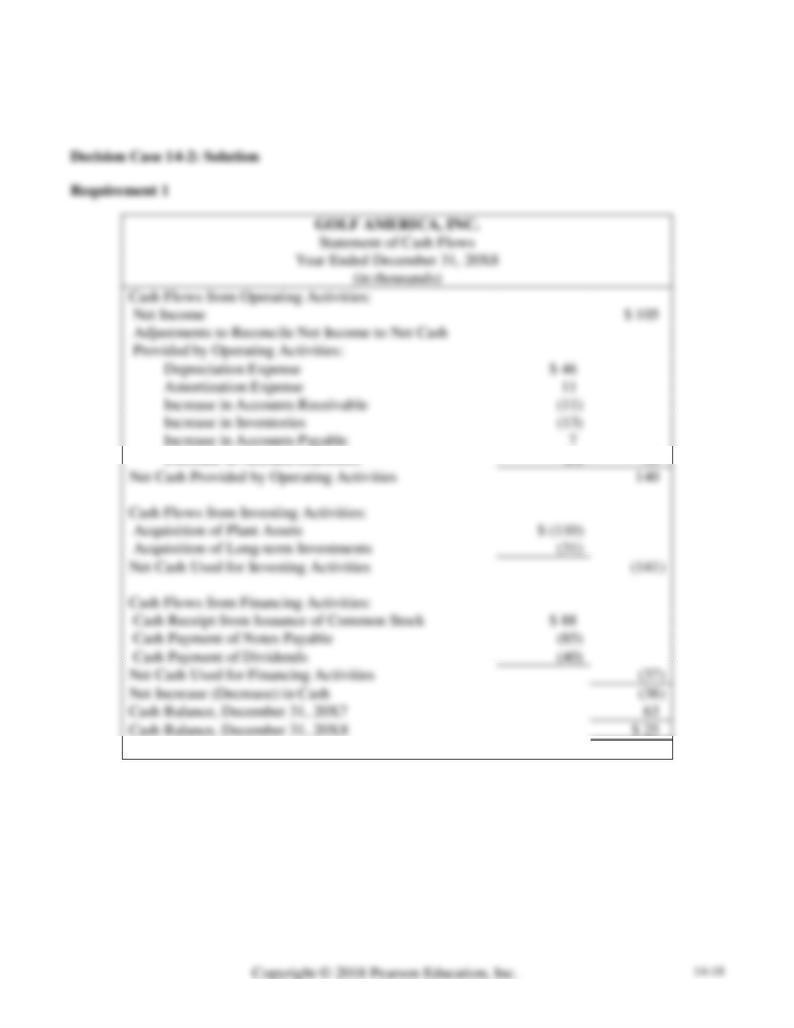
2. Considering net income and the company’s cash flows during 20X8, was it a good year or a bad
year? Give your reasons.

Plant Assets, Net
12/31/20X7
61
Acquisitions
110
46
Accumulated
Depreciation
12/31/20X8
125
Retained Earnings
156
12/31/20X7
105
Net Income
Dividend
40
221
12/31/20X8
Requirement 2
The company shows a strong cash flow from operating activities, and net income has increased $65
1. Is Frank’s company hurt in any way by this fraudulent action?
2. How could this action hurt Frank?
3. How can a business protect against this kind of fraud?
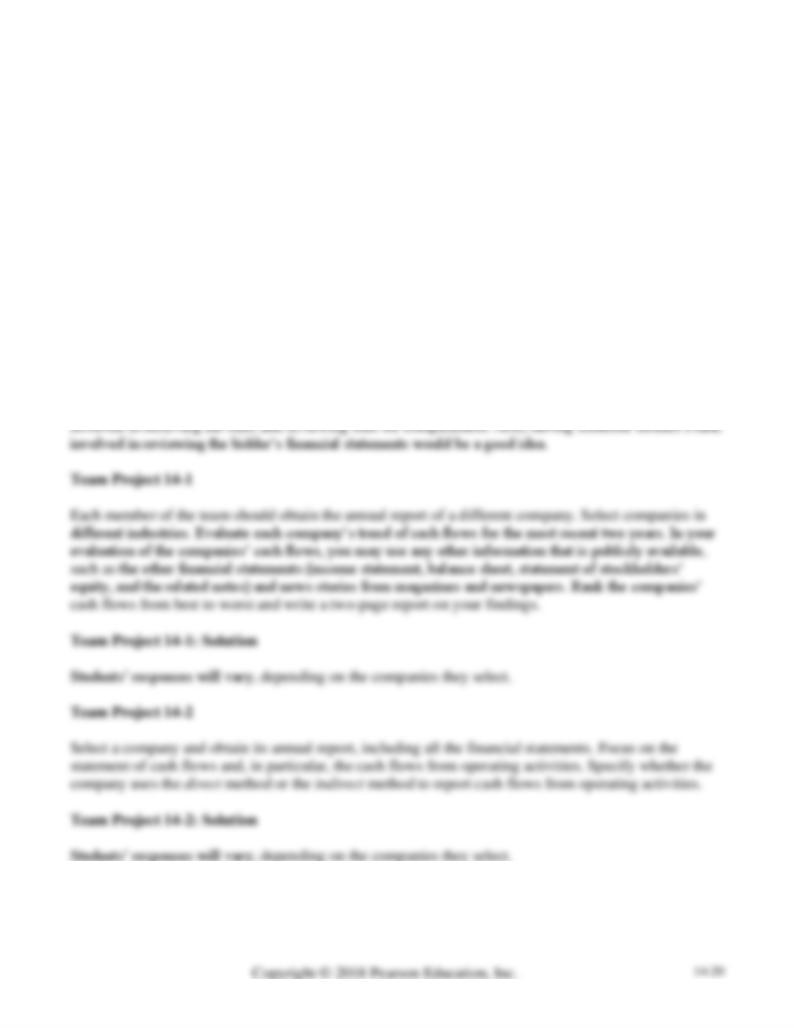
Fraud Case 14-1: Solution
Requirement 1
Frank’s company is hurt by not having complete and accurate information from the bidders. They might
select Bo Freely’s bid based on the misleading statement of cash flows.
Requirement 2
If Bo Freely’s bid is selected and his company runs into financial difficulty, the bidding process that
Frank oversees might be evaluated. If it is determined that he knew the information was inaccurate, he
could be fired or charged with fraud. If it goes undetected, Frank might start to be less valiant in the
bidding process.
Requirement 3
Controls over the bidding process can be strengthened by separation of duties, having different people

Communication Activity 14-1
In 150 words or fewer, explain the difference between operating, investing, and financing activities.
Communication Activity 14-1: Solution